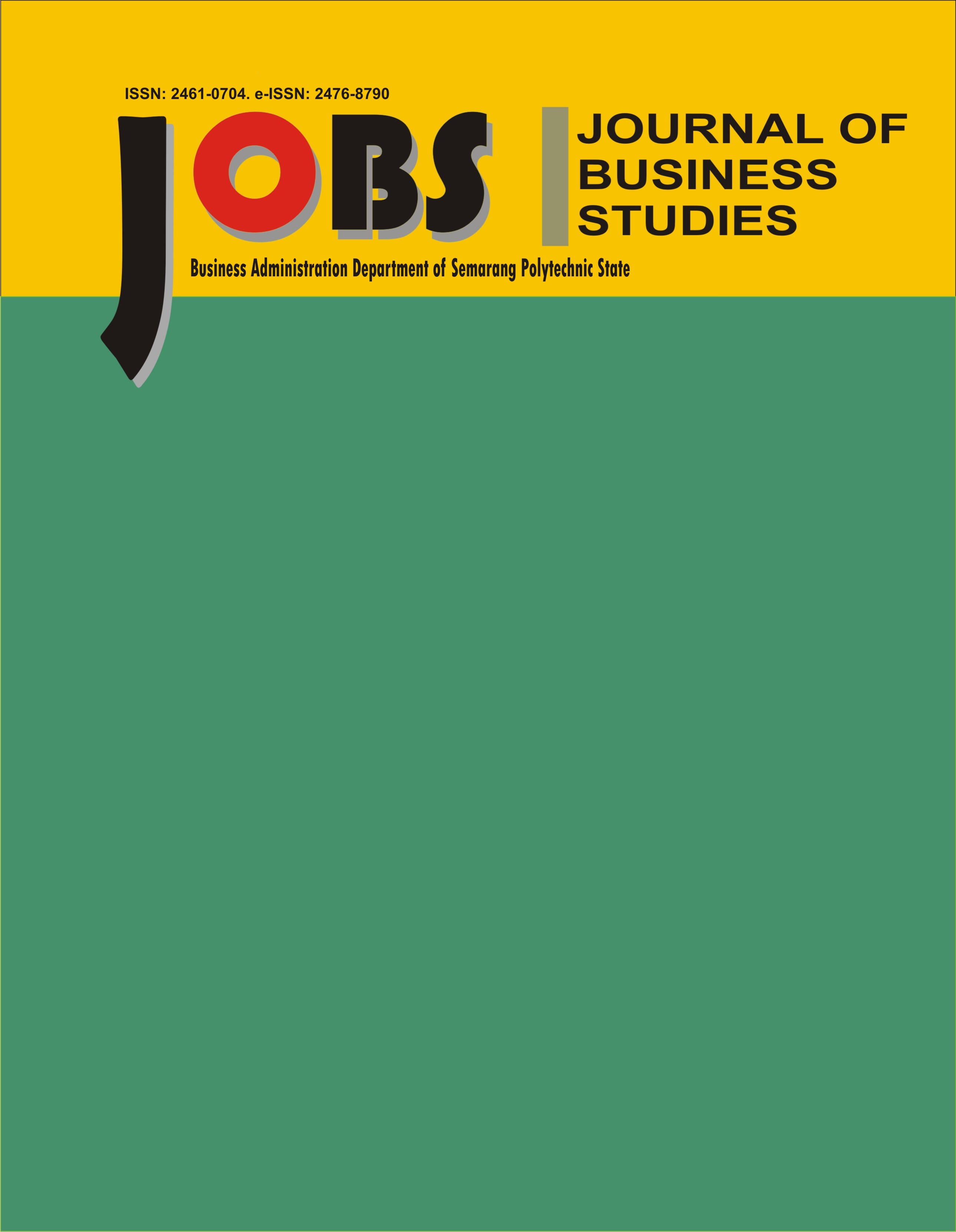PENGARUH CUSTOMER RELATIONSHIP MANAGEMENT TERHADAP LOYALITAS PELANGGAN PADA PT TIGA SERANGKAI SURAKARTA
DOI:
https://doi.org/10.32497/jobs.v5i1.1672Keywords:
customer relationship management, people, process, technology, customer loyaltyAbstract
This research aims to determine the effect of the components of Customer Relationship Management (CRM) which consists of people, process, and technology on customer loyalty at PT Tiga Serangkai Pustaka Mandiri General Book (GB) Division Central Java-DIY Branch. Data collection methods in this research by interview, observation, and questionnaires to 51 respondents using purposive sampling technique. Methods of data analysis used are validity test, reliability test, classic assumption test, multiple linear regression test, t test, F test, and coefficient of determination. The results of this research shows that the variables of people, process, and technology have positive and significant effect both simultaneously or partially on the customer loyalty variable model of multiple linear regression analysis results as follows Customer Loyalty = 3,781 + 0,289 People + 0,320 Process + 0,247 Technology. The results of the analysis obtained Adjusted R2 value of 0.685, this shows that the contribution of independent variables in influencing the dependent variable is 68.5% and the remainder is influenced by other variables not examined in this research.
Downloads
Published
Issue
Section
License
Authors who publish with this journal agree to the following terms:
Authors retain copyright and grant the journal right of first publication with the work simultaneously licensed under a Creative Commons Attribution License that allows others to share the work with an acknowledgement of the work's authorship and initial publication in this journal.
Authors are able to enter into separate, additional contractual arrangements for the non-exclusive distribution of the journal's published version of the work (e.g., post it to an institutional repository or publish it in a book), with an acknowledgement of its initial publication in this journal.
Authors are permitted and encouraged to post their work online (e.g., in institutional repositories or on their website) prior to and during the submission process, as it can lead to productive exchanges, as well as earlier and greater citation of published work (See The Effect of Open Access).






